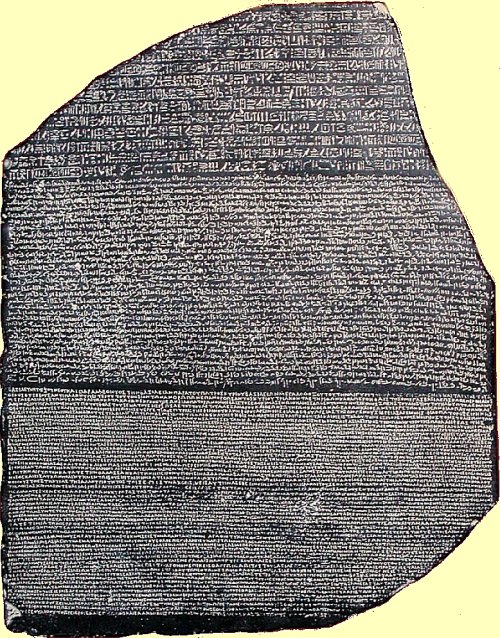Durability of Writing
Today, the durability of writing. The University of Houston presents this series about the machines that make our civilization run, and the people whose ingenuity created them.
The words we read every day are formed from ancient letters. And that same writing, our Latin script, is used by countless other languages as well -- even by whole other language groups. The languages that use this three-thousand-or-so-year-old writing have undergone relentless change, while the script has hardly altered. All the Germanic and Romance languages use it. The Turks, the Vietnamese, and many others, have adopted it more recently.
Now a Science magazine article talks about a conference held at Oxford University. The purpose was to discuss the death and/or durability of the scripts that represent language. Scripts, they find, usually survive language. The script that stays tied to a single language is rare. Egyptian hieroglyphs are a rare case where a script was used for only one language.
Sumerian Cuneiform writing was more typical. It was invented before the idea of alphabetic writing, but its simpler characters were more adaptable than Egypt's pure pictorial script. It could be used for syllables as well as for words. Cuneiform passed from language to language for three thousand years, and it died out only shortly before the birth of Christ.
You and I might well be surprised that script should have a life of its own. Writing seems so intimately tied to speech. We forget, for example, that the word sight has that extra gh because it was once pronounced a lot like its German equivalent, sicht. We forget, in other words, that not only our letters, but even much of our spelling, has outlasted language.
The Science article goes on to other arenas. The Incas, for example, created a strange form of writing -- or, at least, means for preserving what might've been said in words. The system, called khipu, used knotted strings to record information.
While debate rages over just how much could be conveyed with khipu, it is, at the very least, a means of record-keeping. And it survived the shift from Incan speech to Spanish. It's still used today in certain remote villages of the Andes.
But then, what are we willing to call writing? The Huli people, in the New Guinea highlands, name each ditch in their intricate irrigation system after an ancestor. This, says an Oxford an-thropologist, creates a rich genealogical record. Is it writing? Well it serves the same purpose -- and it too survives language.
For years, in radio, I've written words to be spoken. Yet I see a yawning chasm between writing and speaking. The sometimes-awkward vehicle of written English is no more a focus for creative renewal than the awkward QWERTY keyboard with which I write. Only the words themselves seem to have any importance.
So language is alive -- shifting, mutating, and eluding control. But the letters we use to express language fly below our radar screen. I suppose they survive exactly the way a low-level civil servant survives political change.
I'm John Lienhard, at the University of Houston, where we're interested in the way inventive minds work.
A. Lawler, The Slow Deaths of Writing. Science, Vol. 305, 2 July, 2004, pp. 30-33.
I am grateful to Jeff Fadell, UH Library, for additional counsel.

A cast of the Rosetta Stone from the Houston Museum of Printing History. Here, the same text appears in three scripts: Hieroglyphic, Demotic (or Copt), and Greek. Only two languages are represented however: Egyptian and Greek. This is a rare and important counterexample. We are far more accustomed to finding different languages all written in the same script, as in, for example, the seat belt instructions for a modern jet airplane.